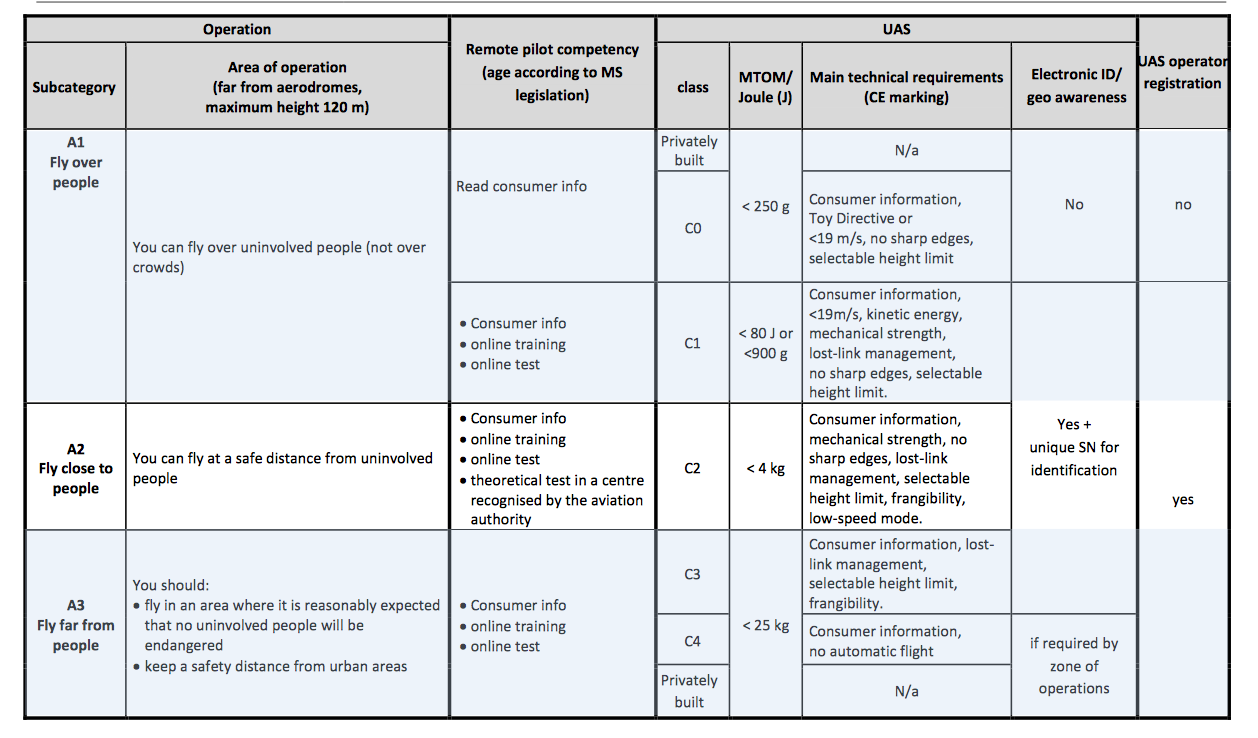I am extremely surprised and disappointed by the rules proposed by EASA to regulate civilian drones. Stringent regulations combined with a narrow perspective create serious damages to industry innovation.

# Problem 1:
Drones with mass greater than 249g are considered potentially dangerous only based on takeoff mass.
The danger with consequent need for entry into a sensitive category should depend on the force exerted on the surface in case of impact.
A drone use case doesn’t necessarily involve heights and operating speeds such that it makes sense to consider any higher than 249g weight drone as potentially dangerous per se, without exceptions.
(Is a 1kg drone that falls from 2 meters high or a 249g drone that falls from 70m more dangerous?)
Not to mention its density: Is more dangerous a 249g piece of lead during a fall or 1 kg of low density plastic foam?
# Problem 2:
The danger factor is considered on the base “near” or “far” from the inhabitated areas and people without any exception based on the specific situation e.g. public areas, low risk areas, private properties (and previous point).
A drone could also be used in operations inside buildings or other private property in an enormous variety of situations.
(Is a 249g drone falling on a fast road or a 1kg drone that falls into your home garden or an industrial warehouse at few meters from the ground, or on the sea, more dangerous?)
Due to these rules will be imposed complications and restrictions (not mentioning insurances and licensing obligations) that will preclude many application scenarios and opportunities in the tech sector.
Anything with propellers that can soar in flight is a drone, but the danger factor is strictly dependent on the situations and conditions of use.



You are not allowed to comment on content in a group you are not member of.
General Aviation